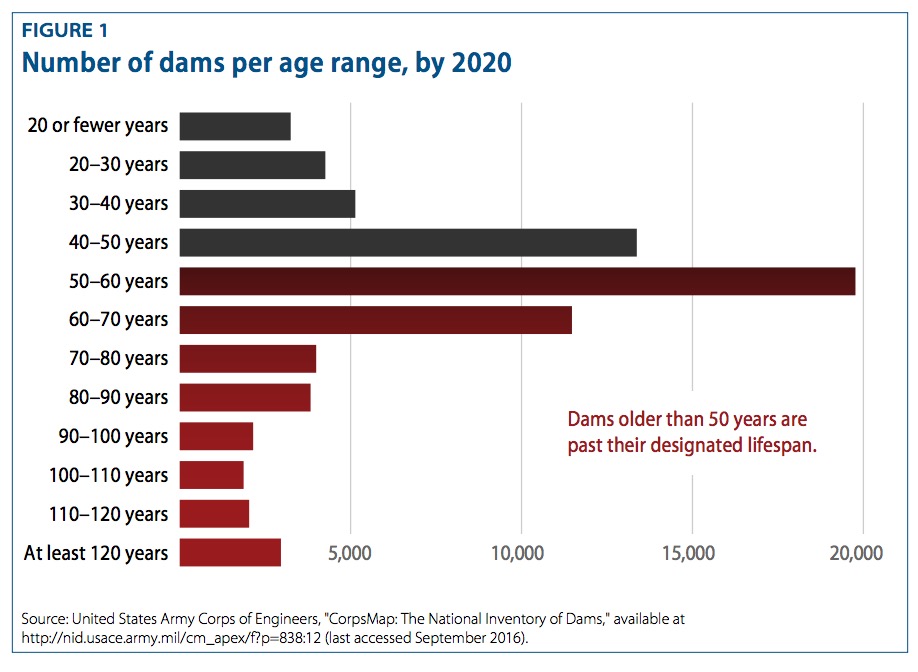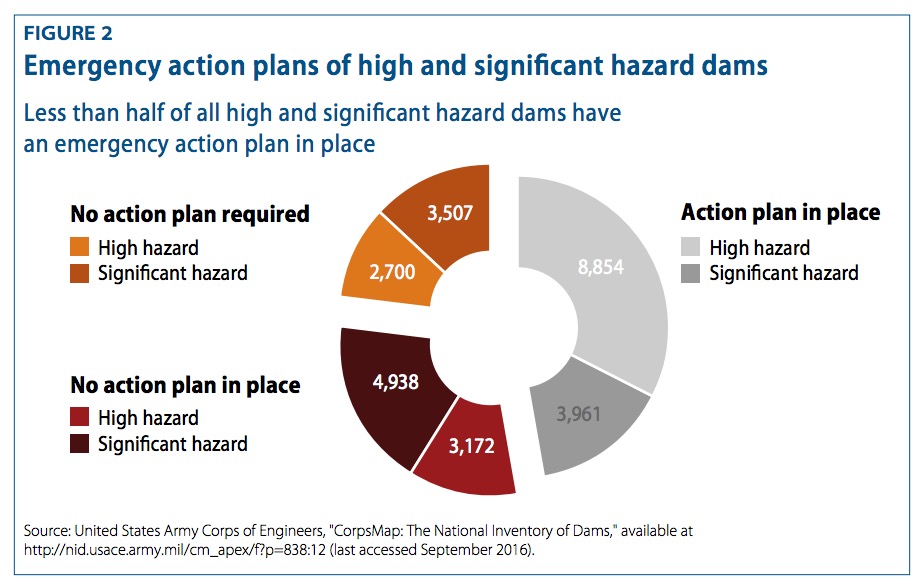CENTER FOR AMERICAN PROGRESS
Introduction and summary
 U.S. infrastructure is in bad shape. Across the country, streets marred with potholes, overcrowded airports, and out-of-date school facilities have become the norm. But the United States’ failing infrastructure causes more than just commonplace inconveniences. Crumbling infrastructure poses real dangers to Americans’ health and safety, as illustrated by the contaminated water system in Flint, Michigan; flooding due to poor storm water drainage systems in Texas and Louisiana; the failing metro system in Washington, D.C.; and blackouts caused by extreme weather and outdated electrical grids in cities across the country.
U.S. infrastructure is in bad shape. Across the country, streets marred with potholes, overcrowded airports, and out-of-date school facilities have become the norm. But the United States’ failing infrastructure causes more than just commonplace inconveniences. Crumbling infrastructure poses real dangers to Americans’ health and safety, as illustrated by the contaminated water system in Flint, Michigan; flooding due to poor storm water drainage systems in Texas and Louisiana; the failing metro system in Washington, D.C.; and blackouts caused by extreme weather and outdated electrical grids in cities across the country.
A new report from the American Society of Civil Engineers, or ASCE, quantifies how the United States’ chronic underinvestment in infrastructure—spending only half of what is needed—has created an investment gap that affects the economy, safety, jobs, communities, and health. As infrastructure continues to age without proper investment and upkeep, the costs to maintain and repair it continue to rise over time. The report found that if infrastructure deficiencies are not addressed, it could cost the economy almost $4 trillion in gross domestic product, or GDP, and 2.5 million jobs by 2025. In short, policymakers’ short-term cost cuts will cause massive expenses in the long term.
The country’s dam infrastructure is not exempt from this underinvestment. With an ASCE grade of a D, the country’s nearly two million dams are one of the most pressing infrastructure challenges for safety, the environment, and the economy. While most of these dams were originally built for economic purposes—including to power mills and factories developed during the industrial revolution and for flood and debris control, water storage and irrigation, hydropower, navigation, and recreation—many of their original purposes and benefits have diminished. In fact, many dams are now obsolete, costly, aging, and unsafe.
Despite a recent decrease in dam construction, the country has still built the equivalent of one dam every day since the signing of the Declaration of Independence. These dams range from small embankment dams that are less than 25 feet high to the Hoover Dam, which is several hundred feet high. Most dams were built before the 1980s, and as technologies have improved and knowledge of the environmental impacts of dams has expanded, the need for many of these structures no longer exists. For example, now that there are more efficient ways to irrigate crops and store water, some small dams that were used for industrial factories or to power mills are no longer needed, and dams that are filled with sediment or that reduce fish populations can cost much more to maintain than to remove. It is unsurprising, then, that the country has an abundance of dams that no longer serve the purpose for which they were intended and that are worthy of deliberate removal.
In 2015, for example, government officials in Texas were forced to confront the dangers associated with failing dams in the state when a heavy rain exposed critical safety problems at Lewisville Lake Dam in Dallas. The 60-year-old dam is one of the riskiest in the nation. If it were to fail, it would cover the city of Dallas in 50 feet of water, resulting in significant loss of life. A former U.S. Army Corps of Engineers dam safety coordinator described the potential failure of this dam as “a much bigger magnitude to the Dallas area than Hurricane Katrina was to New Orleans.”
Functional or not, the dams that dot the country cannot simply be ignored or forgotten. Indeed, these dams pose a significant safety problem: ASCE classifies nearly 4,000 dams as “deficient.” Furthermore, these structures continue to block an estimated 600,000 miles of rivers in the United States. A new analysis by the Center for American Progress for this report demonstrates that dams and reservoirs have modified the flow of 71 percent of Western rivers by length and that Western rivers are 66 percent more fragmented than they would be in their natural state.
This report aims to outline the next phase in federal dam policy and update the values and goals surrounding dam infrastructure and healthy rivers. It offers a few policy solutions:
1. Incentivize the decommissioning and removal of obsolete and unnecessary dams:
- Include decommissioning and removal as a required option in National Environmental Policy Act, or NEPA, review, as well as in federal dam funding and permitting.
- Incentivize private capital to work on dam removal.
- Perform a comprehensive review of federal dams to address safety concerns and determine if they are providing a net benefit to taxpayers.
2. Modernize dams that are beneficial and needed:
- Fix safety problems through a federal Safe Dams Fund.
- Add sustainable hydropower, pumped storage, and small hydropower to existing dams where appropriate.
- Improve dam management and technologies to reduce environmental impact.
Infrastructure problems often do not get the attention and funding that they deserve until they reach the level of disaster. Rather than jumping from crisis to crisis, policymakers should address America’s dam infrastructure problem before the safety risks, costs, and environmental damage become worse than they already are.
Download full version (PDF): Aging Dams and Clogged Rivers
About the Center for American Progress
www.americanprogress.org
The Center for American Progress is an independent nonpartisan policy institute that is dedicated to improving the lives of all Americans, through bold, progressive ideas, as well as strong leadership and concerted action. Our aim is not just to change the conversation, but to change the country.
Tags: American Society of Civil Engineers, ASCE, CAP, Center for American Progress







 RSS Feed
RSS Feed